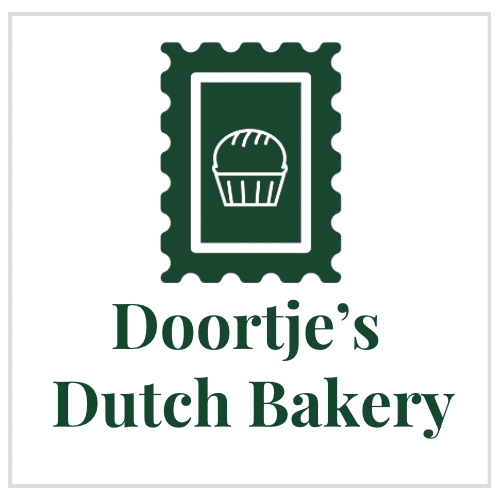Kwarktaart
Kwarktaart: The Cool-Headed Dutch “Cheesecake” My Family Swears By
If you grew up with Netherlands in your heritage like I did, you don’t remember your first kwarktaart—you remember your second. The first disappears too fast to make a memory. In my family, this chilled classic shows up at every birthday, baby visit, and “the sun came out for ten minutes” party. It’s a dessert with old roots, simple ingredients, and the no-nonsense spirit of Dutch kitchens: minimal fuss, maximal joy.
What exactly is “kwark”?
Kwark is a fresh, tangy dairy—think somewhere between yogurt, fromage blanc, and very young farmer’s cheese. It’s made by souring milk with cultures, then straining. The result is silky, lightly tart, and higher in protein than yogurt. That gentle tang is the soul of kwarktaart: it keeps the cake bright and clean rather than heavy and cloying.
A brief (and very Dutch) backstory
Northern Europe has been culturing milk since forever because: 1) cows, 2) long winters, and 3) we hate wasting food. In the Low Countries, fresh cheeses like kwark were everyday staples, eaten with bread or fruit. Sometime in the early–mid 20th century—when home refrigeration and packet gelatin went mainstream—Dutch home bakers started setting sweetened kwark with whipped cream and gelatin in a biscuit crust.
Unlike American baked cheesecake, kwarktaart is proudly no-bake. We chill, not grill. It’s efficient (we love that), affordable (also love), and adaptable to whatever fruit is lurking in the garden or market. By the 1970s and 80s, every respectable tantes’ repertoire included at least three versions: strawberry for spring, lemon for summer, and “mixed forest fruit” for when you find that bag of berries in the freezer in November.
Family heritage: how we do it at home
In my family, kwarktaart is a team sport:
Oma insists on a bastogne or speculaas cookie base for that spiced caramel snap.
My mother adds a splash of lemon and a whisper of vanilla to the filling—balance first, perfume second.
I fold the whipped cream as if it were a peace treaty (gently, but decisively). Over-mix and you’ll get concrete. Under-mix and it slumps like a Dutch dike in a heatwave.
We chill it overnight and decorate with whatever is in season: sliced aardbeien (strawberries), apricots, red currants, or a glossy berry mirror if someone’s feeling dramatic.
The traditional ingredients (and why each one matters)
For the crust:
Dry biscuits (digestives, bastogne, speculaas): Crumb structure + flavor. Bastogne/speculaas bring warm spice; digestives keep it neutral.
Melted butter: Binds crumbs. The butter sets in the fridge, giving the base that clean slice.
Pinch of salt (optional): Brightens the sweetness and spices.
For the filling:
Kwark (quark): The core. Provides tang, body, and that unmistakable “fresh dairy” character.
Sugar: Sweetness, yes—but also texture. It softens the tang without flattening it.
Lemon zest/juice: Classic Dutch touch. Lifts flavor and keeps the dairy tasting lively.
Vanilla: Rounds off the edges. We’re not making vanilla cake; this is background music.
Gelatin: The set. Traditional sheets or powdered—either way, bloom properly and never boil. (Boiling gelatin = rubber ball. Ask me how I know.)
Slagroom (heavy cream), whipped: Lightness and luxurious mouthfeel. Fold, don’t beat, unless you like dense regret.
For topping:
Seasonal fruit: Strawberries, red currants, blueberries, apricots, peaches—whatever is winning at the market.
Glaze (optional): A thin mirror of warmed sieved jam or a fruit gel for shine and slice stability.
Why no-bake is the point
Kwarktaart isn’t trying to be New York cheesecake in a bicycle helmet. It’s a different philosophy: cool, airy, and bright. The acid of kwark keeps it refreshing; gelatin and whipped cream supply structure and softness without the heft. It’s the kind of dessert you can eat at 11:00 in the morning and still feel like a functioning adult. (Don’t pretend you haven’t.)
Variations the Dutch aunties approve
Citroen kwarktaart: Extra zest and a sharper lemon note; sometimes a thin lemon curd layer on top.
Aardbeien klassiek: Strawberry slices set in a light glaze, picture-perfect for birthdays.
Bosvruchten: Mixed berries, especially good when frozen fruit is the only thing standing between you and sadness.
Speculaas winter: Speculaas crust + a pinch of cinnamon in the filling for December feasts.
Ingredient swaps (if your shop plays hard to get)
No kwark? Use full-fat Greek yogurt mixed 1:1 with full-fat labneh or well-drained yogurt cheese. It’s not a scandal if the texture and tang are right.
No gelatin? Agar-agar works, but behaves differently: it sets more firmly and needs a brief simmer to activate. Use less than gelatin and test your set. Vegetarian guests will thank you.
Sugar alternatives? Fine caster sugar integrates best. Honey adds moisture and flavor, so reduce slightly and taste as you go.
Technique truths (learned the hard way)
Room-temp gelatin, cool mixture: Dissolve gelatin gently, then temper with a bit of the kwark mixture before folding it back in. No thermal shocks, no lumps.
Fold, don’t fight: Whipped cream goes in last. Use a big spatula and broad strokes. Stop while it’s still silky.
Chill long enough: Four hours is the minimum; overnight is best for clean slices and family patience.
Sharp knife, hot water: Warm, wipe, slice. Instagram has never met a ragged edge it liked.
Why it endures
Kwarktaart survives the trend cycle because it’s seasonal, thrifty, and timeless. It tastes like fresh milk and summer fruit, it respects your schedule, and it doesn’t pretend to be complicated. My oma would say, “Bake clever, not fancy.” (Yes, I hear the irony—there’s no baking. That’s the point.)
If you’ve never made one, start simple: speculaas base, lemon-vanilla filling, strawberries on top. Let the dairy and fruit do the talking. And if anyone asks for the recipe, smile and say, “It’s been in the family for generations.” Then hand them a slice—because in the Netherlands, that’s how we keep the tradition alive.

